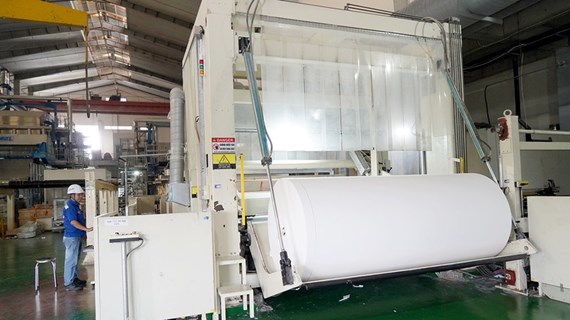HCM City to expand into greener, roomier city
The country’s largest southern city, Ho
Chi Minh, will be developed into a greener, bigger urban zone.
The country’s largest southern city, Ho
Chi Minh, will be developed into a greener, bigger urban zone with the
city centre being expanded in all four directions, linking with urban
areas in neighbouring provinces, according to a re-zoning plan.
Following the master plan for Ho Chi Minh city until 2025, the city will now be expanded to the west and southwest, in addition to the three directions previously agreed upon the 1998 master plan: east, south, north and northwest.
The master plan, jointly created by Ho Chi Minh City Urban Planning Institute and Japanese consultant Nikken Seikei, envisions a new city closely linked to neighbouring urban areas in order to reduce pressure on the city’s increasingly crowded centre.
The new metropolis will be divided into three regions, including the current Ho Chi Minh city as the nucleus of the new urban zone, a new, expanded central area and a suburban area.
The scheme features various plans for upgrading the current city centre which takes into account preservation of the landscape, historical sites and its architectural heritage, as well as reorganisation of traffic networks, clearance of slums along city canals and trenches, and relocation of polluting facilities to improve environmental conditions.
It also recommends building a green belt around the city and planting trees along the city’s highways.
Besides building parks as suggested in the 1998 plan, the new scheme proposes the planting of “green” lines of trees along the banks of the Sai Gon, Dong Nai and Nha Be rivers, the building of new green belts in Hoc Mon district to the north of the city, in Binh Chanh district to the west and in Nha Be district to the south.
Residential parks and service centres will be developed in the nucleus of the city as well as in four satellite regions in four directions, including a north-eastern urban area in District 9 and Thu Duc district, as well as one in Hiep Phuoc port residential park in Nha Be district.
The new master plan not only provides guidelines on infrastructure development, traffic organisation and solid waste management but also stipulates the allocation of land, the proper heights of buildings, in addition to other urban planning regulations and pollution control measures.
Ho Chi Minh City is the largest economic centre in Vietnam , covering over 2,000 square kilometres in area and housing 6.7 million people./.
Following the master plan for Ho Chi Minh city until 2025, the city will now be expanded to the west and southwest, in addition to the three directions previously agreed upon the 1998 master plan: east, south, north and northwest.
The master plan, jointly created by Ho Chi Minh City Urban Planning Institute and Japanese consultant Nikken Seikei, envisions a new city closely linked to neighbouring urban areas in order to reduce pressure on the city’s increasingly crowded centre.
The new metropolis will be divided into three regions, including the current Ho Chi Minh city as the nucleus of the new urban zone, a new, expanded central area and a suburban area.
The scheme features various plans for upgrading the current city centre which takes into account preservation of the landscape, historical sites and its architectural heritage, as well as reorganisation of traffic networks, clearance of slums along city canals and trenches, and relocation of polluting facilities to improve environmental conditions.
It also recommends building a green belt around the city and planting trees along the city’s highways.
Besides building parks as suggested in the 1998 plan, the new scheme proposes the planting of “green” lines of trees along the banks of the Sai Gon, Dong Nai and Nha Be rivers, the building of new green belts in Hoc Mon district to the north of the city, in Binh Chanh district to the west and in Nha Be district to the south.
Residential parks and service centres will be developed in the nucleus of the city as well as in four satellite regions in four directions, including a north-eastern urban area in District 9 and Thu Duc district, as well as one in Hiep Phuoc port residential park in Nha Be district.
The new master plan not only provides guidelines on infrastructure development, traffic organisation and solid waste management but also stipulates the allocation of land, the proper heights of buildings, in addition to other urban planning regulations and pollution control measures.
Ho Chi Minh City is the largest economic centre in Vietnam , covering over 2,000 square kilometres in area and housing 6.7 million people./.













